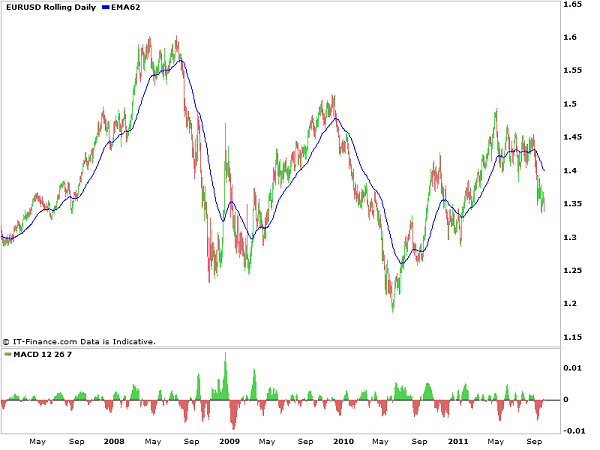Stocks dive, risky assets plummet and the Eurozone inflation rate hits 3%. European stocks and currencies alike took a battering on Friday as any perceived confidence installed in the European markets, with yesterday’s German vote of confidence, quickly fizzled away in the blink of an eye. The unexpected announcement came at a time when economists and traders were beginning to believe that the current European crisis was turning a corner, finance would be forthcoming and the debt problems, albeit serious, were nearer to resolution than a return to the panic that engulfed the markets during the 2008 crisis.
The Euro’s reaction to such news was particularly interesting and proves the point that there are wider factors in play than the regular stimuli for buying and selling a currency. A sharp rise in inflation would often indicate the possibility for a future increase in interest rates, something that would usually appeal to investors, especially the big players. Today’s news, however, had the opposite effect. The cocktail of factors bearing down on the European region are undoubtedly being soured by the omnipresent sovereign debt crisis. Together with the understanding that the European Central Bank may be forced to cut interest rates, despite the inflationary pressures, has led to a fearful vote of no confidence in both the Euro and the Eurozone as a whole.
Dramatics aside, things took a definite turn for the worst today as the end of the third quarter was marked as the worst that the FTSE has experienced since 2002, a fall of over 13% in share prices. Wall Street ended down 2.2%, fearfully the largest fall since the 2008 financial crisis. At a time of shattered nerves and fear, all negative news will be magnified in multiples. Many are comparing the current situation, including the recent moves to risk aversion and the focus on political reaction as opposed to technical analysis, to the 2008 global fallout and economic depression. The fact that the Eurozone may be on the brink of near zero economic growth is a factor which is playing on the minds of equity investors and, ultimately, reaffirming the negative outlook for the euro.
One comfort to take from today’s shock announcement and resulting fall in anything linked to the Eurozone, is the fact that this is not the same scenario as we experienced in 2008. One of the best indicators to monitor a markets emotional state is the humble daily volume. When volume rises sharply, it quite obviously shows that more traders are becoming active participants in a market. When price moves sharply alongside an increase in volume it shows a temporary change in emotion towards that currency pair. Although this may be difficult to distinguish between fear and greed the fact that volume and price are moving together represents an emotional stirring of the two influences. The fact is, putting today into perspective, the volume of active traders was high although substantially less relative to price than those experienced in 2008. The EUR/USD chart below shows that volume was very high yet price was not nearly low enough to be considered as catastrophic as the catalyst of the credit crisis of previous years.

Comments (No)